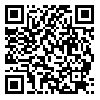

Volume 16, Issue 1 (4-2018)
RBS 2018, 16(1): 108-114 |
Back to browse issues page
Download citation:
BibTeX | RIS | EndNote | Medlars | ProCite | Reference Manager | RefWorks
Send citation to:



BibTeX | RIS | EndNote | Medlars | ProCite | Reference Manager | RefWorks
Send citation to:
دینی س, حسینآبادی م, سید هاشمی س ق. Explaining Hypersexual Disorder Based on Big Five Personality Factors in University Students. RBS 2018; 16 (1) :108-114
URL: http://rbs.mui.ac.ir/article-1-589-en.html
URL: http://rbs.mui.ac.ir/article-1-589-en.html
1- کارشناس ارشد، گروه روانشناسی، دانشکده روانشناسی و علوم تربیتی، واحد مرودشت، دانشگاه آزاد اسلامی، شیراز، ایران
2- کارشناس ارشد، گروه روانشناسی، دانشکده روانشناسی و علوم تربیتی، دانشگاه شهید مدنی آذربایجان، تبریز، ایران
2- کارشناس ارشد، گروه روانشناسی، دانشکده روانشناسی و علوم تربیتی، دانشگاه شهید مدنی آذربایجان، تبریز، ایران
Abstract: (3716 Views)
Aim and Background: Hypersexual disorder is defined as many unsuccessful attempts by individuals to control or reduce the time spent engaging in sexual fantasies, tendencies, and behaviors that are responsive to frustrating mood situations or stressful events. The purpose of this study was to predict hypersexual disorder in university students based on the big five personality traits. Methods and Materials: In this descriptive research, 320 students in Azarbaijan Shahid Madani University, Tabriz, Iran, were randomly selected using multi-stage cluster sampling method based on the faculty and class in the academic year of 2016-2017. The participants completed the Hypersexual Behavior Inventory (HBI) and the NEO Personality Inventory. Data were analyzed using descriptive statistics (mean and standard deviation), Pearson correlation tests, and multiple linear regressions. Findings: Hypersexual disorder had a negative and significant relationship with the dimensions of agreeableness (P ˂ 0.01, r = -0.29) and conscientiousness (P < 0.05, r = -0.12), and had a positive and significant relationship with neuroticism (P < 0.01, r = 0.46). Moreover, the big five personality traits (R 2 = 23.9%) could favorably predict the hypersexual disorder in the university students; and personality dimensions of agreeableness and neuroticism were able to predict the variance of hypersexual disorder in university students. Conclusions: The findings of this study indicate the necessity of considering personality dimensions of agreeableness and neuroticism in hypersexual disorder among university students.
Type of Study: Research |
Subject:
General
Received: 2020/02/8 | Accepted: 2018/04/15 | Published: 2018/04/15
Received: 2020/02/8 | Accepted: 2018/04/15 | Published: 2018/04/15
| Rights and permissions | |
 |
This work is licensed under a Creative Commons Attribution-NonCommercial 4.0 International License. |



